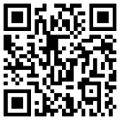Application of Professional Sustainable Development to Improve Pedagogic Competence
Abstract
Full Text:
PDFReferences
D. Maor, “The Teacher’s Role in Developing Interaction and Reflection in an Online Learning Community,” EMI. Educ. Media Int., vol. 40, no. 1–2, pp. 127–138, 2003.
F. J. Tasiam, D. Kustono, P. Purnomo, and H. Elmunsyah, “Fostering pedagogic competence of electrical engineering vocational high school teacher in facing ASEAN economic community,” Eur. J. Educ. Stud., vol. 3, no. 8, pp. 558–571, 2017.
J. Gore, A. Lloyd, M. Smith, J. Bowe, H. Ellis, and D. Lubans, “Effects of professional development on the quality of teaching: Results from a randomised controlled trial of Quality Teaching Rounds,” Teach. Teach. Educ., vol. 68, pp. 99–113, 2017.
A. Uka, “Student satisfaction as an indicator of quality in higher education,” J. Educ. Instr. Stud. world, vol. 4, no. 3, pp. 6–10, 2014.
M. Poe and M. Stassen, “Teaching and Learning Online: Communication, Community, and Assessment,” A Handbook for UMass Faculty. Office of Academic Planning and Assessment, University of Massachusetts, Amherst, 2002. [6] N. Bier, M. Lovett, and R. Seacord, “An Online Learning Approach to Information Systems Security Education,” in Proceedings of the 15th Colloquium for Information Systems Security Education, 2011, pp. 56– 62.
K. Shrain, “Moving towards e-learning paradigm: Readiness of higher education instructors in Palestine,” Int. J. E-Learning, vol. 11, 2012.
K. Thorne, Blended learning: how to integrate online & traditional learning. London: Kogan Page Publishers, 2013.
C. Limongelli, M. Lombardi, A. Marani, F. Sciarrone, and M. Temperini, “A recommendation module to help teachers build courses through the Moodle Learning Management System,” New Rev. Hypermedia Multimed., vol. 22, no. 1–2, pp. 58–82, 2016.
Sugiyono, Metode penelitian pendidikan, pendekatan kuantitatif, kualitatif, dan R & D. Bandung: Alfabeta, 2010.
DOI: http://dx.doi.org/10.17977/um010v2i22019p027
Refbacks
- There are currently no refbacks.
 | Letters in Information Technology Education (LITE) |

1.png)
1.png)
4.png)
1.png)
.png)
.png)

3.png)
1.png)
1.png)

3.jpg)